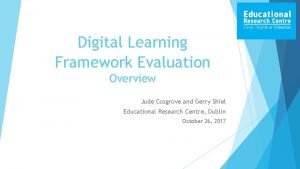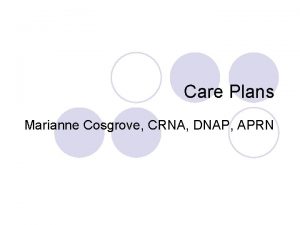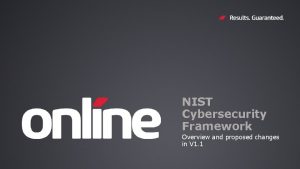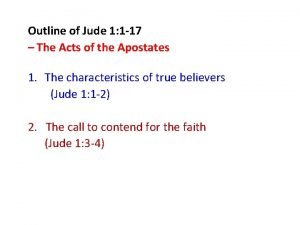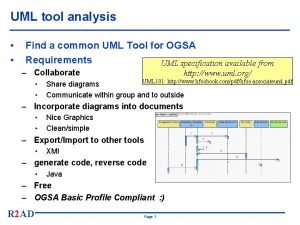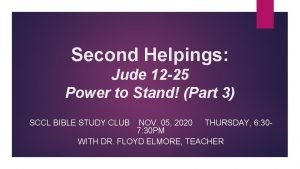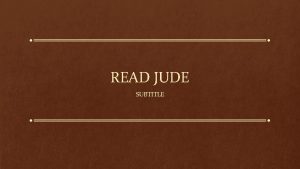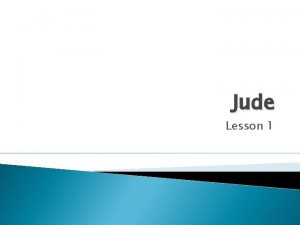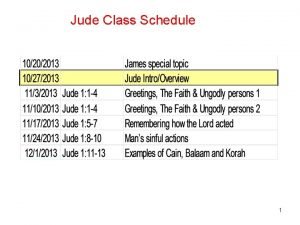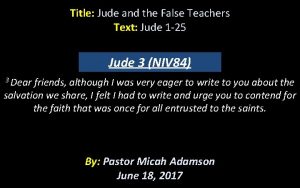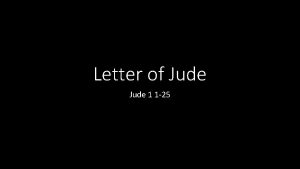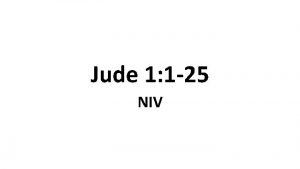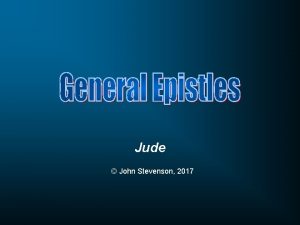Digital Learning Framework Evaluation Overview Jude Cosgrove and















- Slides: 15

Digital Learning Framework Evaluation Overview Jude Cosgrove and Gerry Shiel Educational Research Centre, Dublin October 26, 2017

Overview Aims Design Instruments Analysis and reporting Questions and answers

Importance of the DLF trial Hearing the views of participating schools and teachers will influence the national roll-out of the Digital Learning Framework Taking part is also likely to benefit teaching and learning experiences of school staff and students Thanks to all participating schools for their time, commitment and feedback

Aims 1. To gather information on schools’ views on the Digital Learning Framework (DLF) document in order to highlight strengths and describe potential improvements 2. To gather information from principals and teachers on the DLF trial in order to identify key strengths and challenges in its implementation 3. To explore whether key strengths and challenges vary with the schools’ contexts

Aims 4. To examine whether participation in the DLF trial has had any impact on teaching practices and perceived obstacles relating to teaching and learning in a digital context from the perspectives of principals and teachers 5. To describe key activities, successes and challenges of schools in their work with the PDST during the trial, from the perspectives of both PDST staff and school staff 6. To describe the learning from the DLF trial from the schools’ and PDST perspectives in order to compile information that could contribute to ongoing development and implementation of the DLF

Design The trial is conducted in 30 primary and 20 post-primary schools from Oct 2017 to May 2018 The Educational Research Centre (ERC) has been asked by DES to carry out an evaluation of the trial The ERC is responsible for developing and distributing the questionnaires, conducting the analyses, and drafting a report on the evaluation Schools have been selected so as to achieve broad representativeness by DEIS status, enrolment size, sex composition, language of instruction, and geographic spread All eight domains of the DLF document are represented in the selected schools’ proposals

Design Online questionnaires are administered to school principals, teachers involved in the trial, and PDST staff members supporting schools in the trial The questionnaires contain both closed (numeric) and open (text response) questions To provide a more in-depth understanding of the implementation of the DLF trial, six 90 -minute focus groups are conducted with school staff (three primary and three post-primary) during November 2017 All data gathered for the purposes of the DLF trial are treated anonymously. Results that identify individual schools or individual persons will never be published

Instruments Principal questionnaires Two 20 -minute questionnaires in November 2017 and April/May 2018 Completed by principal Teacher questionnaires Two 20 -minute questionnaires in November 2017 and April/May 2018 Completed by teachers involved in the trial School questionnaires for the PDST component Two 20 -minute questionnaires in November 2017 and April/May 2018 Completed by principal or nominee after first PDST visit PDST questionnaires These mirror the school questionnaire for the PDST component Students will not be asked to complete a questionnaire However, focus groups with students are planned for April/May

Administration – school and teacher IDs Each school will be assigned a two-digit number by the ERC Each teacher will be assigned a four-digit number. The first two digits consist of the ERC-assigned school ID and the last two digits are sequential numbers, 01, 02, 03 etc. The ERC will provide a form to the principal of each school for principals to put the names of participating teachers beside each ID Teachers will then use this ID to complete the questionnaire. The ERC will never see the name of the teacher assigned to each ID These IDs are needed to process and quality assure the data

Administration – school and teacher IDs In the first week of November, school principals will receive: an invitation email with a link to the first school and PDST questionnaires an invitation email for teachers with a link to the first teacher questionnaire a blank teacher ID form (see next slide) Principals will be asked to forward the teachers’ email along with the completed form to teachers who are involved in the trial Teachers will need to use this form to identify their 4 -digit ID number An email address has been set up to respond to queries relating to the evaluation: DLF@erc. ie The ERC website will shortly include a section for the DLF evaluation and the ERC/DLF web address will be included in the introduction email to principals

Administration – example teacher ID form

Analysis and reporting A report on the evaluation of the DLF trial will be submitted to the Department of Education and Skills in July 2018 An interim report will be submitted to the Department about mid-way through the trial Analyses will consist of descriptive statistics of numeric responses as well as thematic analysis of ‘written’ comments Focus group interviews will be drawn on to further illustrate emerging themes

Analysis and reporting The numeric and ‘written’ components will be triangulated (examined jointly) to produce a draft set of findings, recommendations and potential guidelines for national roll-out In drafting conclusions: findings that emerge consistently across all respondent groups will be emphasised findings that emerge as inconsistent across respondent groups will be flagged as indicative of difficulties with implementing the DLF.

Summary of timeline Week of November 6: Invitation email to principals with links to principal questionnaire, PDST questionnaire teacher email with link to teacher questionnaire to be forwarded to teachers blank teacher ID form to be completed and forwarded to teachers if possible, responses within one week Last two weeks in November: Focus group interviews April 2018: Follow-up questionnaire invitation emails sent out, interim report submitted to DES May 2018: Follow-up focus group interviews July 2018: Full report on evaluation submitted to DES

Thank you! Questions and Answers Comments and feedback
 Jude cosgrove
Jude cosgrove Early years learning framework overview
Early years learning framework overview Jerry cosgrove
Jerry cosgrove Marianne cosgrove
Marianne cosgrove Spring framework overview
Spring framework overview Nist cybersecurity framework overview
Nist cybersecurity framework overview Cuadro comparativo de e-learning b-learning y m-learning
Cuadro comparativo de e-learning b-learning y m-learning Jude hasan
Jude hasan Jude outline
Jude outline Jude currier
Jude currier Bat mitza
Bat mitza Jude 1:12-13
Jude 1:12-13 Is jude the half brother of jesus
Is jude the half brother of jesus Jude uml
Jude uml St jude brain injury network
St jude brain injury network Jude 12-25
Jude 12-25
